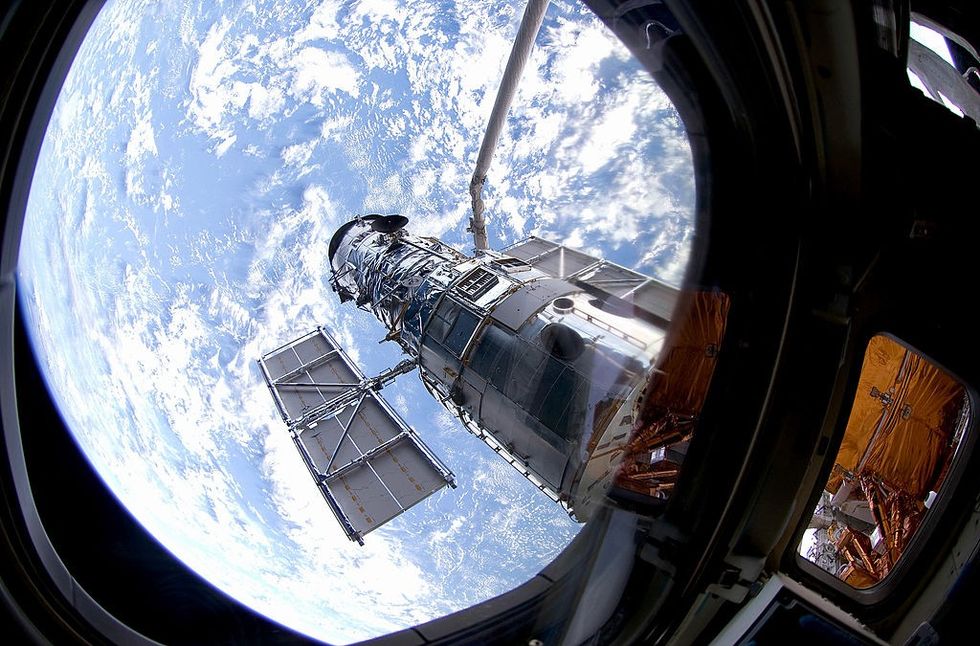Hubble Telescope pictures 'bridge of stars' connecting two colliding galaxies

The galaxy group is located around 270 million light-years from Earth
Don't Miss
Most Read
A Hubble Space Telescope has captured an incredible new image of a huge "bridge of stars" which extends from one galaxy to another.
The picture shows galaxy Arp 295a, from which the 250,000 light-year-long streamer of stars is stretching, surrounded by a milky-coloured array of gas and dust.
Nearby galaxy Arp 295c can also been seen in the image, appearing as a smaller bright blue spiral.
The two galaxies, along with Arp 295b - which is not seen in the image - make up the loose galactic grouping called Arp 295.

The new NASA Hubble Space Telescope image features a member of the galaxy group Arp 295
|Nasa
The group is located around 270million light-years from Earth.
Many experts suggest the latest image may hint at what could happen when the Milky Way and Andromeda galaxies collide in 4billion years.
The connecting "bridge of stars" were created when two galaxies circled each other with a gravitational interaction which results in dust and stars.
Galaxies which come close enough disrupt their shapes and are known as interacting galaxies.
LATEST DEVELOPMENTS:
This galactic interplay can last for billions of years as the galaxies involved loop around each other.
The repetition can cause galaxies collide and merge.
If the interaction becomes more permanent, the shape galaxies can become more homogenous, shapeless and irregular.
The merger also causes an influx of gas, which causes intense star formation called a starburst, as collapsing clouds of gas and dust build blocks of new stars.

A Hubble Space Telescope has captured an incredible new image of a huge "bridge of stars" which extends from one galaxy to another
|Getty
Nasa say: "Because the universe was smaller in the past, galaxies were more likely to interact with one another gravitationally. Some of Hubble’s cosmic 'snapshots' show fantastic stellar streamers pulled out and flung across space by colliding galaxies.
"They apparently settled over time into the more familiarly shaped galaxies seen closer to Earth and hence nearer to the present time.
"By carefully studying galaxies at different epochs, astronomers can see how galaxies changed and evolved over time.
"Among the things they investigate are the relative amounts of stars and gas in galaxies, the types and amounts of identifiable chemical elements they hold, and star-formation rates."











